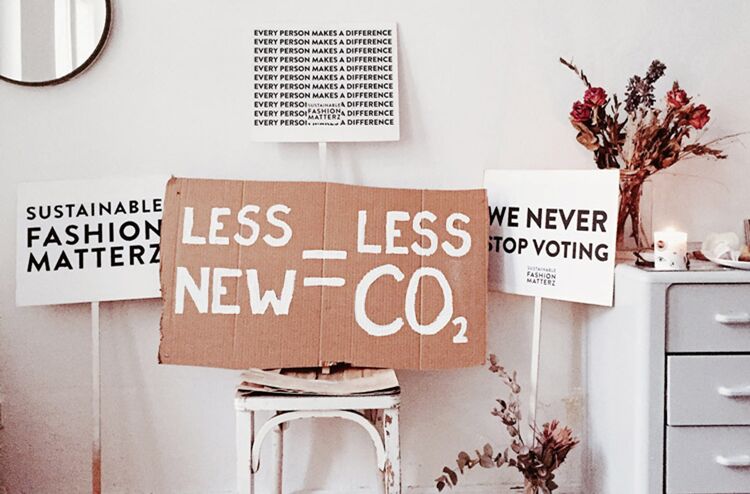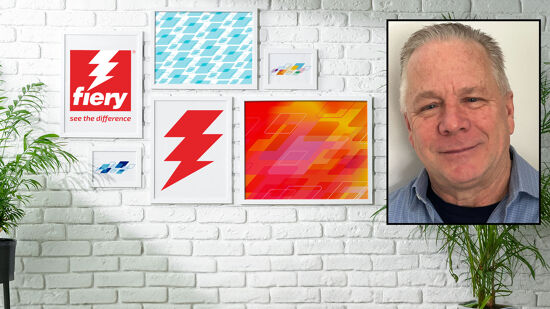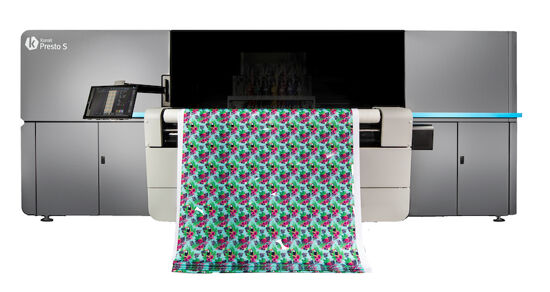The changing face of fashion

Laurel Brunner discusses how fashion is changing from mass production that negatively impacts the environment to more sustainable manfucaturing.
It’s amazing how many options Print Service Providers have when it comes to business diversification. But perhaps the most risky and revolutionary is the move into bespoke apparel manufacturing. It’s risky because there is no hard evidence that consumers are willing to move en mass away from an environmentally hostile production chain model. This model is entirely built around bulk quantities of sourced materials turned into garments in huge volumes. The result is cheap and lovely clothes made from a variety of fibres, blends and fabrics. The shift to garment microfactories away from the bulk model enables on demand production of garments close to their points of purchase. But will this model really reshape the face of fashion?
Plenty of digital printing system manufacturers think that it will, and hope that the fashion industry will embrace an on demand model to get its sector’s emissions down. Microfactories could help cut the emissions and waste associated with bulk manufacturing. They could also help fashion get even faster, so that designers and brands can deliver more than a handful of collections every year. We could move away from fashion’s seasonal tyranny to a model that responds to events rather than the season.
There’s lots to like in this model, particularly the access it gives young designers to the market. We still need the fabrics to be produced but if they can be digitally printed with patterns and designs, enormous amounts of water can be saved. Producing garments close to market, via online sales, also saves on the emissions associated with transportation, warehousing and inventory management. The relationship between designer and customer is direct and intimate and only those clothes for which there is a buyer are produced. At least in theory.
Unhooking the fashion industry from its traditional framework will take more than good intentions and high ideals, particularly in developed markets such as the USA and Europe. However in places where the garment industry still has room to grow, digital textile printing could have real and realisable scope for growth creating a market for new fashion that reflects local expectations and realities. The savings in resources can be impressive, but cutting waste and the dumping of used clothing has perhaps greater environmental impact potential, particularly since it offers opportunities for local business development in remote regions.
Digital textile production also has considerable capacity for scale, a more likely scenario in the West. What is still needed is the right commercial infrastructure for on demand fashion, high quality printing on a wider substrate range, marketing to consumers and of course education within existing supply chains. That should be the goal of all manufacturers hoping to push on demand digital textile and garment manufacture from Canon, Durst, EFI and HP through to Seiko Epson. There’s a lot at stake.
Source Information: This article was produced by the Verdigris Project, an industry initiative intended to raise awareness of print’s positive environmental impact. This weekly commentary helps printing companies keep up to date with environmental standards, and how environmentally friendly business management can help improve their bottom lines. Verdigris is supported by the following companies: Agfa Graphics, EFI, Fespa, Fujifilm, HP, Kodak, Miraclon, RicohSplash PR, Unity Publishing and Xeikon.
Topics
Interested in joining our community?
Enquire today about joining your local FESPA Association or FESPA Direct
Recent news
.png?width=550)
FESPA Middle East 2025 Overall Highlights
It has already been 2 weeks since we opened the doors on the 2nd edition of FESPA Middle East.

How will Fiery simplify print processes and enhance their user experience
In this podcast, Debbie McKeegan interviews Michael Chramtchenko, Chief of Staff, Sales and Marketing at Fiery, discussing the company's innovative software solutions for the print industry, particularly in garment decoration.

What is digital textile printing and what are the opportunities?
Nessan Cleary shares how textile printing covers a wide range of different market sectors which vary in opportunities. Nessan discusses sportswear, direct to garment and home décor.

Vote now for the FESPA Awards’ People’s Choice Award!
The voting for the prestigious People's Choice FESPA Award is now open until 7th February where those in the industry have the opportunity to vote for their favourite entries, celebrating the exceptional talent in the industry.